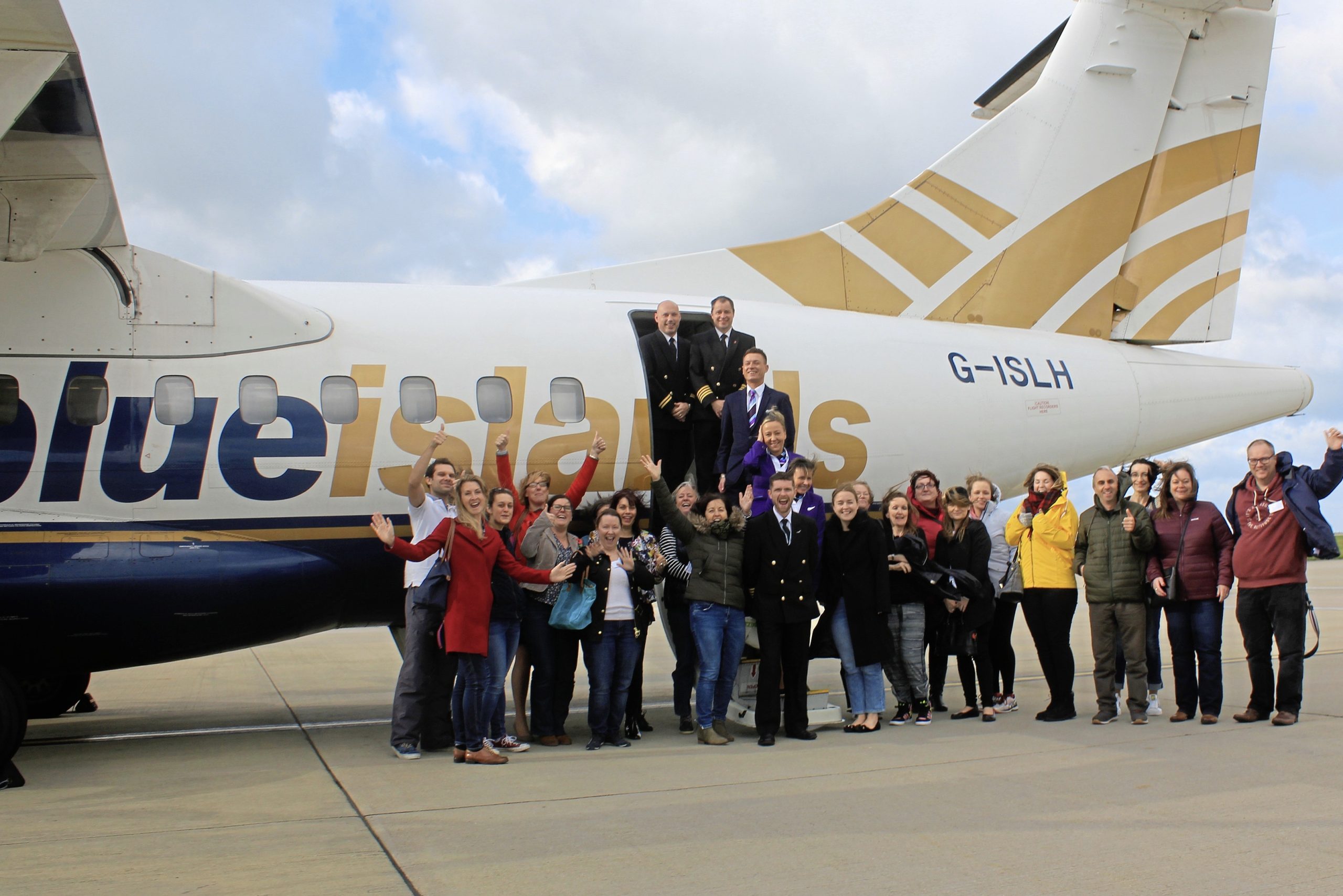THE flight from London to Boston that I took in the last week of August 2001 was a relaxed affair. A couple of hours in, a stewardess aboard the jumbo jet invited myself and others to venture to the front to meet the pilots.
I was flying to the States to start a year-long study period at the University of Massachusetts, Amherst, and the possibilities that year seemed as unrestricted as the view I had over the Atlantic.
One of the things new students had to do during the first week at UMASS was head to the computer suite to pick up log-in details to use the university’s intranet.
There, in the lobby, I was met by a kindly American chap who worked as a computer research specialist at the university. He shook my hand, introduced himself as Christoffer Carstanjen and told me, in an unassuming manner, that if I needed any help logging in, I should come and find him.
With so much to discover – the town of Amherst, the phenomenon of American frat parties and the on-campus ice hockey stadium – I didn’t return to the computer suite for three weeks.
When I did, the friendly chap who I had met in the lobby was not there. Instead, a small plaque bearing his name and some flowers lay near to where his chair had stood.
On the morning of September 11, 2001, Christoffer had boarded United Airlines flight 175 at Boston for a holiday in California. Christoffer never reached his destination as he and the other 60 victims on the hijacked plane were killed when it struck the south tower of the World Trade Centre. He was 33.
My flight back from Boston to London for Christmas that year was a very different experience to the one I had taken to begin my North American adventure.
Security at Boston Logan International Airport was at its maximum and sniffer dogs crawled every inch of the terminal.
Passengers now had to take laptops out of their bags and remove their shoes for scanning, and despite it being the festive season, the tension among travellers was high.
As the United Airlines plane taxied for take-off, for the first time I began to think of all the things that could go wrong on a flight. Chief among them was the fear that a terrorist might have somehow snuck aboard.
Then came what I can only describe as a genuinely heart-stopping moment. As the plane lined up for take-off, a transmission over the PA system from the pilots’ cockpit sounded like several voices screaming at each other in a frenzied tone. Myself and the rest of the passengers exchanged worried looks and the strange sounds continued to filter through the plane’s speakers for a few more seconds.
Just before our aircraft bolted down the runway, the angry noises abated and a cheery American accent was heard through the speakers: ‘Sorry about that, we just had some radio interference across the PA system.’
Since that day, however, I have always been petrified of take-off, no matter where I’m flying to or from.
So when the opportunity came up this autumn to enrol on Blue Islands’ Freedom to Fly course, I gladly signed up.
Blue Islands decided to offer the course as a one-off to Islanders free of charge after running a successful trial in Guernsey earlier this year.
Islanders were invited to apply for a place on the Jersey course in September and Blue Islands received more than 300 applications. I joined a class of 20 adults who had been selected at random and who all had an acute fear of flying, for two days at Jersey Airport one weekend earlier in November.
DAY ONE
Blue Islands pilot Captain Chris Stubbs has been flying planes for the company since 2002, and he is in charge of organising training for pilots and crew at a senior level. Most of his working week is spent overseeing pilot training in flight simulators.
On the Saturday, he took time out to go through every aircraft-related subject you could possibly imagine with us.
No sooner had he started talking to us in a classroom above the departure terminal, than we were bombarding him with questions.
CLASS: ‘What if the engines fail?’
CHRIS: ‘The engines are much more reliable than a car engine. If you expect your car engine to last ten years, the engines in the Blue Islands’ ATR planes, for example, would last 200 years. And we can fly these planes on one engine if necessary.’
CLASS: ‘What if there is a fire in one of the engines?’
CHRIS: ‘Each engine is equipped with two independent fire extinguishers in it.’
The challenge Chris faced in addressing a classroom full of people who would rather swim the Channel than take a short flight, is that he had to answer a seemingly never-ending stream of questions based on numerous – and often irrational – fears about air travel.
And once he had allayed one of our concerns, our minds naturally meandered to the next unsubstantiated fear.
‘Whenever I sit in a window seat and see condensation, I worry that the window is broken and will come off its hinges mid-flight,’ I told him.
‘The windows are triple glazed,’ said Chris, ‘and the very outer panel is part of the structure of the aircraft – it is bonded to it. The pilots’ windows are fixed in a slightly different way and they are bird proof. When aeroplanes are being designed, one of the tests they do is to fire a dead bird – usually a frozen chicken – onto the front of the plane to check that the windows are structurally intact.’
CLASS: ‘What about bird strikes?’
CHRIS: ‘Jersey Airport used to have a problem with birds. The Airport arranged for all the grass around the airfield to be dug up and it was relaid with grass that birds don’t like to eat. It’s extremely rare for a plane to encounter a bird strike and even rarer to have bird strikes on two engines.’
CLASS: ‘Why, once the plane has climbed above the clouds after take-off, does it sound like the engines have been turned off?’
CHRIS: ‘That is the moment the engines have been switched from climb mode to cruise mode.’
CLASS: ‘What about hail?’
CHRIS: ‘Hail can do terrible things to the paint work…’
CLASS: ‘And lightning?’
CHRIS: ‘Although it would look spectacular from the outside, lightning would never do anything inside the plane because it can’t penetrate the aircraft.’
Asked why Jersey Airport insists on carrying out all the same safety procedures as a major airport hub like Heathrow, Chris replied: ‘We don’t want to become a target for terrorism. If Jersey is seen as a weak spot, we will become a target. We can stop ourselves becoming a target by keeping security very strict.’
For many people, turbulence is the single biggest reason why they won’t fly.
‘Turbulence is moving air masses,’ Chris told us. ‘It’s really no different from going over cobbles or speed bumps in your car and it is nothing to worry about. There’s no record of an aeroplane ever having a structural failure because of turbulence.’
It wasn’t just Chris’s soothing delivery in answering our questions that was helping to reassure us, it was also the fact that he had appealed to the logical parts of our brain. Whether we would heed the logic and board the ‘experience flight’ that Blue Islands was laying on for us the following day, was another matter.
BRAIN GAMES
In the afternoon Mo Harford Bury, who is a UK-based mind coach specialising in behavioural change, spoke to us about the inner workings of our brains.
Mo addressed the concept of fear head on, looking at what it actually is and where it comes from; what happens in the brain and body to create those fears; and how to let go of those feelings.
She explained that we don’t actually choose our thoughts, but that thousands of thoughts will pass through our heads every day, no matter what.
‘It’s a thought that creates a feeling, and fear of flying is just a feeling, but we don’t have to act on our thoughts,’ she said.
Mo also described how our brains were wired to help us when we were cave people, not as modern-day air travellers.
‘When you’re in a plane you’re thinking, “Oh no, the door’s shut and I’m trapped in here”. What happens in the brain is that the survival mechanism goes, “I’m at risk, I need to be ready for fight or flight, so what do I need? All the best chemistry, that’s what.”
‘So your brain gives you a massive dose of adrenalin, but now you’re sitting in a chair on the plane strapped in by your seatbelt, buzzing with excess energy.
‘The brain also decides to put most of your blood in your arms and legs in case you need to resort to fight or flight in this moment. But by doing that it reduces the blood and oxygen flowing around the brain itself – so now you can’t think straight!’
Mo gave us a number of ‘tools’ to tackle our fear of flying, including an introduction to mindfulness – the psychological process of focusing on the present moment without fixating on one thought or feeling.
And we learned – through trying out different postures in the classroom – that our physical stance is connected to our emotional experience.
Mo got us to assume a foetal position for a full minute and then asked us how we felt.
‘Not great,’ was the general consensus.
She explained that by making ourselves take up a smaller amount of space, each of our brains released a higher level of cortisol – the stress chemical – while our testosterone level had dropped.
We were also told to stand up and make ourselves ‘big’ by spreading our arms out to the sides. Everyone said they felt calmer and more confident after a minute in that position. Mo informed us that was because our posture had sent out a positive message to our brain, causing it to increase the testosterone level while reducing the cortisol levels.
Although an aircraft passenger cannot adopt that posture when they are required to be seated, the point was well made – by relaxing our posture before and during a flight, we could change our brain chemistry.
DAY TWO
Blue Islands had arranged for us to take a special ‘experience flight’ for 30 minutes on Sunday morning, on board one of their ATR-42 planes – a propeller aircraft used to fly to Guernsey, Southampton and Bristol.
Had I not been on the course the day before, I would have been sitting rigid in my seat, yet I was able to adopt more of a relaxed posture in my chair as the plane taxied and then took off.
Chris did not fly the plane – he had two other pilots overseeing that – which meant he was able to talk us through the flight from the isle, with Mo and cabin crew also in attendance.
In the event, the only advice I needed was how to ward off air sickness. In the words of John Lennon, the paper bag was on my knee – man, I was having a dreadful flight – but not because I felt any fear. There was no fear anymore, I simply felt air sick.
That wasn’t surprising. On what was a particularly blustery day, the pilots were – at Chris’s request – flying the plane well below the clouds so we could experience generous helpings of turbulence.
When we touched down and posed for a photo outside the plane, the majority of the class said that they had overcome their fear of flying, including Islander Kim Lennard, who had not flown for 14 years.
‘The last time I flew before today was to the Algarve 14 years ago,’ Kim told me.
‘September 11, 2001 was when my fears started to really escalate, but now I’m absolutely buzzing after today’s flight. I recently had my 50th birthday and to celebrate I will be booking a flight to Liverpool to do the Beatles tour.’
Blue Islands say the course was such a success they will consider holding more of them, although they are likely to have to charge a fee as it costs thousands of pounds to run.
The general consensus on social media is that many more Islanders would be happy to pay for such a course if it means liberating themselves from the fear of flying.






